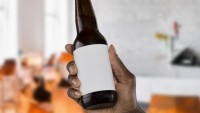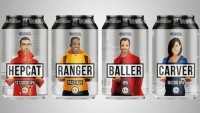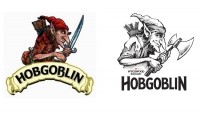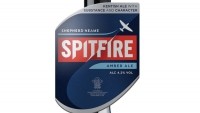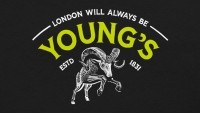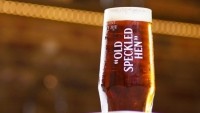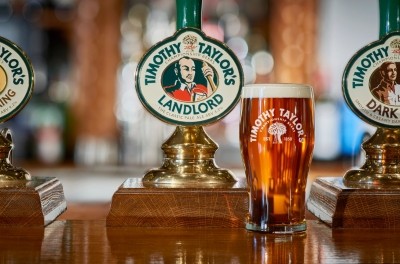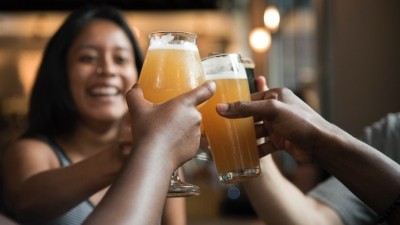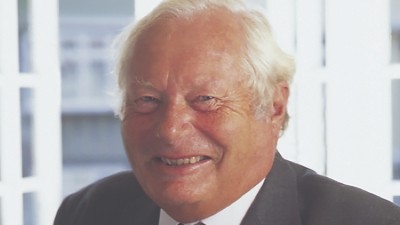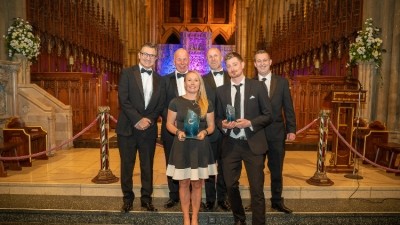Spotlight
Why are historic beers being rebranded?
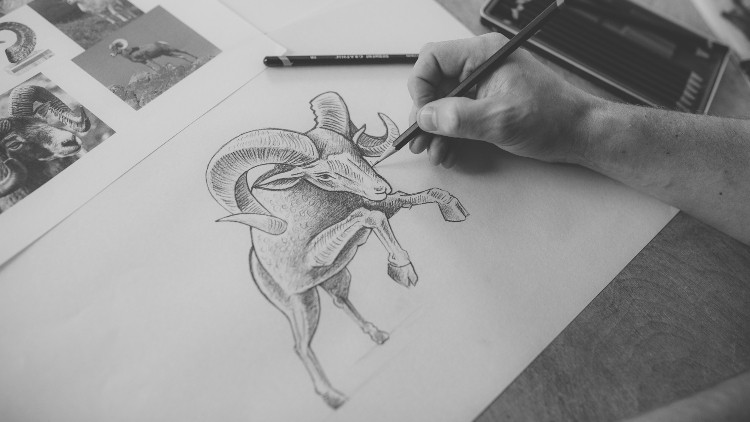
Drawing a blank: the potential cost of plain alcohol labelling
According to research revealed in business valuation consultancy Brand Finance’s Plain Packaging 2019 report, the cost of rolling out the same plain packaging laws that apply to cigarettes across sugary and alcoholic beverages would cost the global drinks industry more than £350bn.
Such measures would be “hugely damaging” to the beer industry according to Barry Watts, head of public affairs & policy at the Society of Independent Brewers (SIBA).
“We strongly believe that plain packaging would undermine our members’ businesses, drive down consumer choice and lead to independent brewery closures,” he told The Morning Advertiser.
“Such measures would penalise an innovative and important UK industry,” Portman Group chief executive John Timothy explained, “especially the smallest producers, while doing nothing to change the behaviour of those people that misuse alcohol.
“There is no logical or reasoned argument for plain packaging of alcohol,” he added.
Find out more here.
Author Roland Muller estimates that we come into contact with 6,000 brand logos per day – on average four per minute – in the foreword to his book Los Logos.
Yet while an observational study of drinkers at a Cambridge city centre pub suggests the average pubgoer spends two minutes and 23 seconds at the bar between deciding what to drink, ordering, paying and walking away beverage in hand – offering ample time to soak up pump clip and point-of-sale beer branding – the reality is that its never been more difficult for beer brands to cut through market noise.
According to Marston’s On-Trade Beer Report 2019-20, the total volume of beer consumed in the on-trade has fallen by 36% since January 2007. Yet, since the year 2000, 2,030 new breweries have opened in the UK according to the British Beer & Pub Association’s 2019 Statistical Handbook – on average, a new brewery every three days – with 100 new producers joining the fray in 2018 alone.
Breaking into customer repertoires
Beer drinkers are creatures of habit according to Marston’s , with ale and lager drinkers consuming from small repertoires of go-to brands at the bar – on average 4.2 and 3.7-strong respectively.
Yet with 62% of ale drinkers changing their preference at some point during the year and 36% and 57% of lager and ale drinkers respectively preferring to experiment with new drinks, opportunities to break into a customer’s brand repertoire still exist.
According to Georgina Young, head brewer at Cornwall-based St Austell Brewery – which scooped the Best Beer Marketing and Beer & Cider Marketer of the Year gongs at the 2018 Beer and Cider Marketing Awards – brand aesthetics are key to gate crashing.
“Everyone drinks with their eyes,” she says. “I don’t like tap walls in plain tiles. It’s what’s next to that tap that’s really important.
“We’ve just rebranded two of our keg beers. Monterey is a 3.9% ABV pale ale – it looks very Californian as the name implies, it’s very tropical, and Cubic. It’s the same taste, but the sales of both of those have gone up.”
What’s more, speaking to The Morning Advertiser in June, director of the reinvented Watneys’ Beer Company Nick Whitehurst explained that while producers need to care “deeply and passionately” about their products, they have to recognise that while consumers plump for taste to a degree, they will inevitably be drawn to stand-out brands.
“People go into a bar and the vast majority of people buy brands,” he explained. “They’ve got a small portfolio they recognise, trust and look for.
“That’s why BrewDog, Camden, Meantime and lots of craft brands do so well – it’s the brands that shine through and are going on to get big distribution wins with big retailers.”
Rebranding Gipsy Hill
Independent south London brewery Gipsy Hill unveiled refreshed branding revolving around “brewing a better life”.
“Part of promoting who we are and what we’re doing is wrapped up in our team and celebrating them,” co-founder Sam McMeekin reveals. “They’re the backbone of what we do here. Their likenesses are featured on the can, and their passions are engraved into the background of each design.”
Find out more here.
Persuading the next generation
Although figures from the NHS state 29% of 18 to 25-year-olds don’t drink alcohol – research has found they’re also the age group most easily swayed by branding.
Research by global intelligence platform Streetbees found that around half (51%) of that age group have been influenced one way or another by branding versus 41% who haven’t.
This compares to an average of 44% across all age groups, with those aged between 26 and 35 apparently the most brand-averse with 49% saying they’ve never been swayed by flashy logos and bright colours at the bar.
Hobgoblin, which produces more than 130,000 barrels per year from its home at the Wychwood Brewery in Witney, Oxfordshire, has recognised the need to reach a younger generation of drinkers and given its heritage brand a facelift despite a strong presence in the on-trade. Hobgoblin Ruby and Gold hold a combined 5.8% share of the total cask ale market according to CGA, with its cask products distributed in more than 3,000 outlets. Yet against a backdrop of modern clamour for fantasy and medieval themes, as evidenced by the popularity of TV series Game of Thrones, it is hoped the brand’s facelift will make its portfolio more accessible to new drinkers.
Hobgoblin's modern makeover
For the first time in its 31-year history, Hobgoblin was given a modern facelift to make the brand more accessible to potential new drinkers.
“This is a bold change for Hobgoblin,” brand manager Jo Wyke explains. “We know how much it is celebrated as the leader of the pack and its legacy among great British beers, so we wanted to make sure we tested the new look, researched and tested again, ensuring we kept the character that everyone expects from Hobgoblin.”
Find out more here.
Clamour for modern values
Hobgoblin’s modern makeover is further vindicated by the fact that 41% of 18 to 25s and 39% of 26 to 35s agree that “I think modern beer brands understand me better as a consumer”, according to Streetbees – with only 14% of each age-group disagreeing with the statement. Is falls to an average of 34% across all age groups and 27% among those aged over 46.
This approach helps shift beer at the 2019 Great British Pub Awards’ Best for Beer award winner the Drawing Board in Leamington Spa, Warwickshire, according to its operator.
“We use local brewers and are interested in being supplied but there are quite a few that are very ‘old school’ in their style,” Sam Cornwall-Jones explains.
“We are championing craft beer and trying to bring it a bit more to the forefront. We’re kind of anti old-school branding. We like to be current and interesting.
“As long as the beer’s good, that’s fine, but it does need to have a more modern style to be of interest for us, rather than the old man and a pint style, as it were.”
Spitfire's new set of wings
Launched in May 1990 to mark the 50th anniversary of the Battle of Britain and raise funds for the RAF Benevolent Fund, Shepherd Neame’s Spitfire was given a new set of wings in April.
“Spitfire is a genuinely classic British brand and with such an iconic name, the new design encapsulates its spirit perfectly,” Spitfire brand manager Will Upfield explained.
Find out more here.
Refreshing historic brands
However, this doesn’t mean that historic brands should abandon their roots in favour of neon lights and pictures of avocados – the art of the brand revamp is very much a balancing act. Streetbees’ research found heritage still tugs the heartstrings with 28% of 18 to 25s agreeing with ‘I prefer beer brands that showcase their heritage’, rising to 31% across all age groups.
Interestingly, 26 to 35s were the biggest fans of historic beer branding with more than a third (35%) agreeing, compared to 28% of 36 to 45s and 31% of those aged over 46.
In keeping with this, Britain’s oldest brewer, Shepherd Neame, had to tread carefully when rebranding Spitfire – which was released to mark the 50th anniversary of the Battle of Britain and raise funds for the RAF Benevolent Fund – earlier this year, given the brand’s historic and emotional significance.
“People are very positive about it,” Shepherd Neame chief executive Jonathan Neame explained. “We get the most obvious feedback sponsoring Kent Spitfires cricket team – we’ve rebranded the ground at Canterbury and players are wearing new shirts – we have various different variants of Spitfire, and actually people are really engaged in it.
“We’ve done a lot of sampling with a new Land Rover that we have and a new van that we take to a lot of outside events, and there’s no question that the brand has got a lot of emotional connection and resonance with our customer base and I think the refresh has been very effective.
“We did a similar thing with Whitstable Bay. If you go into any of our pubs and see some of our newer brands, like Bear Island, they look pretty sharp on the bar.”
Out with the old at Young's
With a brewery dating back to 1831, Young’s was under pressure to “revitalise and refresh” according to design agency Kingdom & Sparrow.
“With the core brand message of ‘Take London Head On’, we took Young’s on a bold journey,” Kingdom & Sparrow managing director Daniel Gradwell explains. “We wanted to incorporate their heritage, while embracing how London and the beer industry had evolved”.
Updating cask
Extending the appeal of cask beer to younger drinkers is a particular challenge according to Hannah Bevan, client director of Cornwall-based food and drink brand design agency Kingdom & Sparrow – which helped Young’s with a recent revamp.
According to Marston’s On-Trade Beer Report 2019-20, nearly half (49%) of ale drinkers are aged 50-plus, compared to 34% in the lager category.
What’s more, the cask beer market’s traditionally old-school branding is made to look more dated in the eyes of new consumers when juxtaposed with vibrant-looking new craft brews.
“The newer generation of beer drinkers are more inclined to go towards the brighter, more exciting storytelling brands, which are craft,” Bevan explains. “If cask ales are going to stand up to that they need to rethink how they’re communicating with those consumers.
“It’s about giving more relevance in today’s market. There are a lot of younger, or newer, generations that negative perceptions of cask ale so we had to try and eliminate that barrier.
“We gave Young’s a contemporary voice and look but the brief was to make sure we maintained the history, provenance and credibility because they’re one of the oldest breweries in the UK. It was about producing something up to date but keeping some heritage cues that wouldn’t alienate their loyal consumers.”
What’s more, according to The Cask Report 2019, when asked whether more eye-catching designs would help sell more cask, 34% of all surveyed pubs said it would – the second most popular stimulant of cask sales behind more consumer education.
New look for Old Speckled Hen
Greene King-owned English pale ale Old Speckled Hen gave its 40-year heritage a modern twist at the beginning of September.
“Some 90% of Old Speckled Hen is enjoyed cool and carbonated, either at home, in bottle or can format or as a keg beer in the pub,” Greene King brewing and brands managing director Matt Starbuck explained. “We’ve introduced the new branding to reflect this giving it a fresher, cleaner and more contemporary look.”
Find out more here.
Additionally, a third (34%) of the 1,700 licensees surveyed said that more eye-catching designs and stand-out bar fonts would encourage them to offer more cask.
“With cask ale, we’re at a turning point,” Kingdom & Sparrow creative director Johnny Paton adds. “People are coming back to the category and they’re looking for something that looks familiar but exciting. Being able to combine some of those heritage cues in design but with a more contemporary or modern approach felt like the right direction to go in for a brand like Young’s.”
Nostalgia with a twist
“We’ve always thought Sharp’s have got the tone right,” Paton continues. “Not only do they play on their location but they’re still using a lot of traditional cues even down to their enamelled pump clips at the bar. They still retain those classic features that don’t alienate a more traditional cask ale drinker but the vibrancy and crisp, clean design works really well.”
Watneys’ Whitehurst adds brewers can tap into the enduring clamour for nostalgia among younger consumers in other sectors. “If you look at other markets, Adidas keeps selling Stan Smiths. There are lots of fashion brands that bring back retro clothing, there’s retro confectionery in sweets and things like that,” he argues.
“So, in this world, where everybody is on their phone and most things are virtual, having a link back to the past can be compelling for some as long as you make sure what you’re doing is relevant and modern and contemporary now.”
